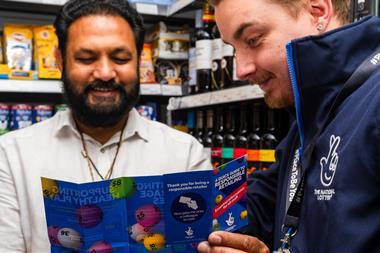Attracting and retaining top-quality employees isn't just about how much you pay them. Companies will thrive if they train and induct staff fully as well as acknowledge and reward performance.
Steve Crabb
Editor, People Management
There are four steps you need to take.
Step 1: get your employer brand right. Companies need to establish what's their strongest asset - is it a fun working culture, flexible working opportunities or excellent training and career development. Make sure candidates know what to expect if they come to work for you, so they don't get any surprises when they start.
Step 2: hit the ground running. A good induction programme, which introduces new employees to their job, their team and the organisation as a whole, will improve morale, boost productivity and cut down the number of recruits who leave within the first six months.
Step 3: sort out your management. The best way to get high performance out of your employees is to go back to basics. Companies need to ensure that staff are well managed, they know what is expected of them, they have a degree of discretion over how and when they do their jobs, rather than being told what to do, and they see that slacking, absenteeism and persistent lateness are dealt with firmly and fairly.
Step 4: recognise great performance. You don't need to pay a fortune to get the best out of people (although it can help) - but you do need to show your staff that you know when they are performing well. Simply saying well done can pay dividends.
Kerry Hunt
Training manager, Tates
Attracting and retaining high quality staff isn't just about what rate of pay is on offer but about recognition, reward and development opportunities. To that end Tates has an extensive staff care package as well as a comprehensive training and development programme. This has significantly contributed to a reduction in staff turnover for a fifth consecutive year.
The staff care package is continually being enhanced and last year we introduced a staff discount to all employees. This was a welcome addition to complement established staff care initiatives such as a staff lottery, savings scheme, long service recognition, good attendance prize draws as well as customer care awards. We also have Store of the Year and Sales Assistant of the Year competitions.
Tates invests heavily in training and development. Career aspirations and further development needs are frequently identified through an annual performance review process in which every employee, regardless of job role participates. The development programme addresses the needs of everyone from store supervisors to company directors and has a heavy emphasis on how people manage themselves and their teams fairly and effectively in order to ensure the continued success of the business.
Sarah Booth
HR consultant, Nisa-Today's
Companies should be clear about what the job entails. They should have a job description which describes not just the tasks staff are required to do, but the standard of work that is expected of them and how they can achieve them. You should also be clear about the kind of person who would best fulfil the role. Devise a person specification - what knowledge and skills will the person need to possess, which are essential and which can be achieved through training?
Structure interviews to ensure that you test out what it is you have described in the person specification and job description. Ask candidates to give examples of when they have achieved certain things and avoid hypothetical scenarios if possible. Make sure the interview is structured so that questions can be asked throughout from the candidate.
When the new employee starts, have an induction plan based on the job description and identify a 'buddy' to help them settle in. Have regular chats in the first three months about how they are settling into the job and give clear feedback about how they are performing. Identify training and development needs and make sure these are met.
Also, don't forget to give praise where it is due. Encourage workers to come up with ideas, listen to their views and involve them in decision making wherever possible. And develop regular two-way constructive communication.
Steve Crabb
Editor, People Management
There are four steps you need to take.
Step 1: get your employer brand right. Companies need to establish what's their strongest asset - is it a fun working culture, flexible working opportunities or excellent training and career development. Make sure candidates know what to expect if they come to work for you, so they don't get any surprises when they start.
Step 2: hit the ground running. A good induction programme, which introduces new employees to their job, their team and the organisation as a whole, will improve morale, boost productivity and cut down the number of recruits who leave within the first six months.
Step 3: sort out your management. The best way to get high performance out of your employees is to go back to basics. Companies need to ensure that staff are well managed, they know what is expected of them, they have a degree of discretion over how and when they do their jobs, rather than being told what to do, and they see that slacking, absenteeism and persistent lateness are dealt with firmly and fairly.
Step 4: recognise great performance. You don't need to pay a fortune to get the best out of people (although it can help) - but you do need to show your staff that you know when they are performing well. Simply saying well done can pay dividends.
Kerry Hunt
Training manager, Tates
Attracting and retaining high quality staff isn't just about what rate of pay is on offer but about recognition, reward and development opportunities. To that end Tates has an extensive staff care package as well as a comprehensive training and development programme. This has significantly contributed to a reduction in staff turnover for a fifth consecutive year.
The staff care package is continually being enhanced and last year we introduced a staff discount to all employees. This was a welcome addition to complement established staff care initiatives such as a staff lottery, savings scheme, long service recognition, good attendance prize draws as well as customer care awards. We also have Store of the Year and Sales Assistant of the Year competitions.
Tates invests heavily in training and development. Career aspirations and further development needs are frequently identified through an annual performance review process in which every employee, regardless of job role participates. The development programme addresses the needs of everyone from store supervisors to company directors and has a heavy emphasis on how people manage themselves and their teams fairly and effectively in order to ensure the continued success of the business.
Sarah Booth
HR consultant, Nisa-Today's
Companies should be clear about what the job entails. They should have a job description which describes not just the tasks staff are required to do, but the standard of work that is expected of them and how they can achieve them. You should also be clear about the kind of person who would best fulfil the role. Devise a person specification - what knowledge and skills will the person need to possess, which are essential and which can be achieved through training?
Structure interviews to ensure that you test out what it is you have described in the person specification and job description. Ask candidates to give examples of when they have achieved certain things and avoid hypothetical scenarios if possible. Make sure the interview is structured so that questions can be asked throughout from the candidate.
When the new employee starts, have an induction plan based on the job description and identify a 'buddy' to help them settle in. Have regular chats in the first three months about how they are settling into the job and give clear feedback about how they are performing. Identify training and development needs and make sure these are met.
Also, don't forget to give praise where it is due. Encourage workers to come up with ideas, listen to their views and involve them in decision making wherever possible. And develop regular two-way constructive communication.














No comments yet